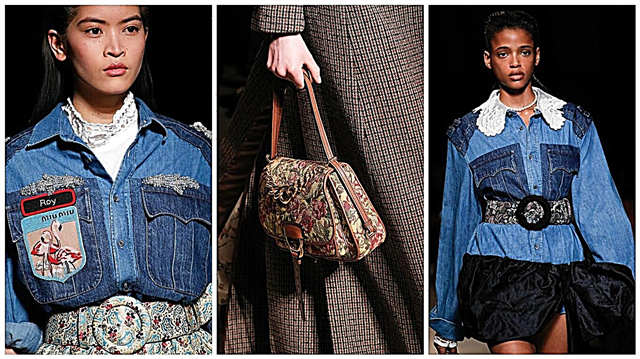Share
Pin
Tweet
Send
Share
Send
How to iron
How to iron

Ironing Sewn clothes - no less important process than sewing clothes. If you want the product to look professionally sewn, you need to know how to iron the product correctly during sewing.
1. For proper ironing of products, it is necessary to have an iron with a temperature controller, several ironers. An iron is a piece of fabric through which the product is ironed. For ironing different fabrics, different ironers are used. Linen or cotton white fabrics are most commonly used.
Use a woolen iron to iron wool fabrics. Put a dry wool iron on the workpiece area, top it with a normal wet iron and start ironing.
Use a napkin made of fleece fabric (such as velvet) toironing pile or embossed fabrics such as quilted, embroidered or beaded. The ironing machine is placed face up on the ironing pad, and the product is facedown on the ironing board, covered with a pile of iron fabric on top and ironed without pressing the iron strongly. The ironer must always be clean.
A dry iron is placed on the surface of the product and moistened with a wet sponge, a cloth brush or spray gun, and then ironed. Each seam is ironed until completely dry.
To ensure that the seam allowance is not imprinted on the front side, thick paper is placed under it.

2. Straight seams can be ironed with a suture roller, as in the photo above. For this, the product parts are laid on the seam roller with the wrong side up so that the seam lies on the roller. The seam is ironed with the tip of the iron moving along the seam line. In this case, the sections of the seam allowances are not ironed and therefore do not leave prints on the front side of the product. The suture roller can be made as follows: roll a magazine into a tube and wrap it with cloth or a towel. 3. To iron the seams in hard-to-reach places of the grooved parts of the product (lapels, collars, cuffs, valves, pockets, belts, etc.), it is advisable to use a narrow shoe. If not, you can use thick paper templates. The template must be cut exactly to the shape of the part without allowances for seams. The template is put inside the part turned on the face and ironed from the side on which the edging is visible.

4. The seams on thin fabrics are mainly ironed in one direction, on thick ones - ironed.
The allowances of the shoulder seams are ironed on the shelf if there is no chest protrusion, and on the back, if there is the chest protrusion, or ironed.
Oversizes of the side seams are ironed on a shelf if there is no lateral tuck, and on the back if there is one.
Reliefs, tucks from the shoulder sections and the waist line iron to the middle of the shelf or back. The side tucks are ironed down, the seams of the grind coquette - on the yoke.
Seam allowances in a two-seam sleeve are ironed to the upper half; in a single-seam sleeve - iron if there is no ulnar tuck, and iron towards the ledge if there is a tuck; The middle seam is ironed onto the front half.
5. When ironing the okata, the sleeves are first ironed by sewing the seam from the wrong side onto the rib, carefully using the nose of the iron to straighten and suturing the okat assembly. The iron should not go into the fabric of the sleeve more than 1−2 cm. Lay the product on the ironing board so that the sleeve with its wrong side was on top.
On the edge ironed and the lower part of the sleeve-in seam, going into the fabric of the sleeve 3-5 cm. The sleeve-in seam must be ironed carefully, without stretching it.
The sleeves are ironed on the sleeve at the top of the sewing seam, and left ironed “on the rib” at the bottom.
On the front side, the top of the sleeve and the iron are ironed on a special block or on weight using a small pad.
6.In all grinding parts, before turning them off, the grinding seam must be ironed. If this is not done, it is very difficult to achieve an even edging and a clear straight line of the processed seam. It is especially important not to miss this operation when turning the side, lapels, collar.
Ironing the seams on velvet and velveteen is carried out by folding the fabric face to face, not pressing the iron, but only slightly touching them with fabric.
Silk velvet is ironed on a weight or on a brush. Pile zamina on velvet and velveteen is removed with a wet cloth folded in several layers, touching it with an iron, and a brush, which smooths the crumpled pile, and also over the steam, straightening the pile with a brush.
Before wet-heat treatment of the product, all chalk lines, marks, pins and basting threads must be removed from the material. If it is necessary to iron on the basting threads, then they should be silk.
The ironing of swept parts is carried out in two stages: first they are lightly ironed, and then, after removing the basting threads, they do the final wetting treatment.
Lining, acetate and some other silk are better to iron without moisture, as water may stain them. If the fabric is not smoothed out, lightly sprinkle an iron from the spray gun (avoiding large wet spots on it) and iron through it.
7. Always, before starting ironing, check whether there are any water stains on the fabric. Cotton and linen fabrics can be ironed without an ironer, spraying them from the wrong side with water from a spray bottle.
Iron the product along the direction of the shared thread. Pile fabrics are ironed along the direction of the pile. Do not iron pleats, tucks, and seams until you are sure the product is right for you.
Do not iron soft folds, assemblies, and puffs.
If you need to melt hot melt with an iron, put aluminum foil on the ironing board under the fabric. It will reflect steam and heat.
8. Troubleshooting ironing defects
Prints of folded edges on the front of the product in most cases can be removed. To do this, lay the product with the wrong side up and iron the fabric under the edge of the hem allowance.
If on the front side of the product after ironing there are lasses (sagging spots), they must be removed in the following way: fold the ironer twice and moisten it with a solution of vinegar in water (1-2 tablespoons of vinegar in 1 liter of water), put on the sagging place and steam, lightly touching it with an iron. The steam will straighten the smoothed fibers of the fabric and the luster will disappear. But before applying a solution of vinegar to the product, check the fabric for durability of coloring on a small shred.
If you are remaking a finished product, first of all you need to remove traces of folds, folds and seams.
To smooth the creases, use a wet iron. If wrinkles are still visible after this, use a sponge or brush to apply a mixture of vinegar and water to the fabric. Pre-check on the shred or seam allowance the stain of the fabric.
9. To clean the surface of the iron from traces of hot melt glue during ironing (after gluing the gaskets), the following quick method can be applied. Pour salt between sheets of wax paper and run the iron over the sheets folded together until the sole of the iron becomes clean. In addition, there is a special tool - a pencil for cleaning the sole of the iron.
Cleaning the iron is periodically necessary, even if its sole does not have any burn marks and looks like new, since almost every iron uses water to form steam, which precipitates, especially tap water, form limescale, preventing heavy steam formation. The modern steam iron tefal, braun and other brands has a built-in cleaning tool for this - the self-cleaning function, indispensable at home, the main thing is to use it correctly.
Share
Pin
Tweet
Send
Share
Send



